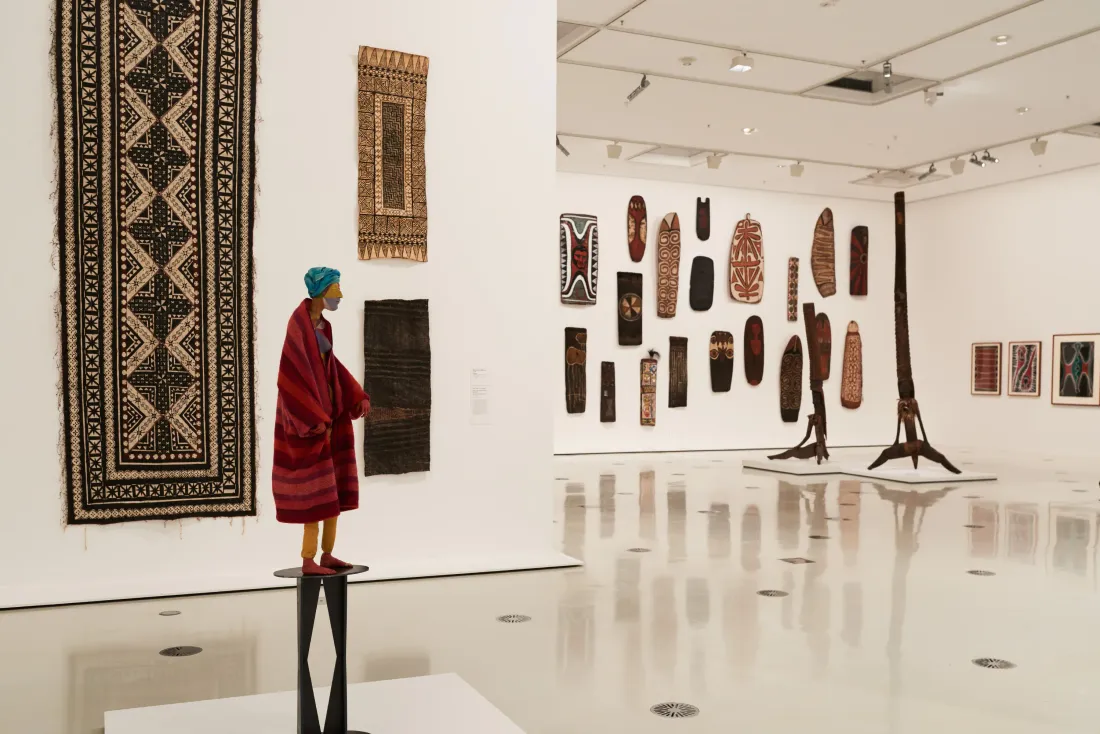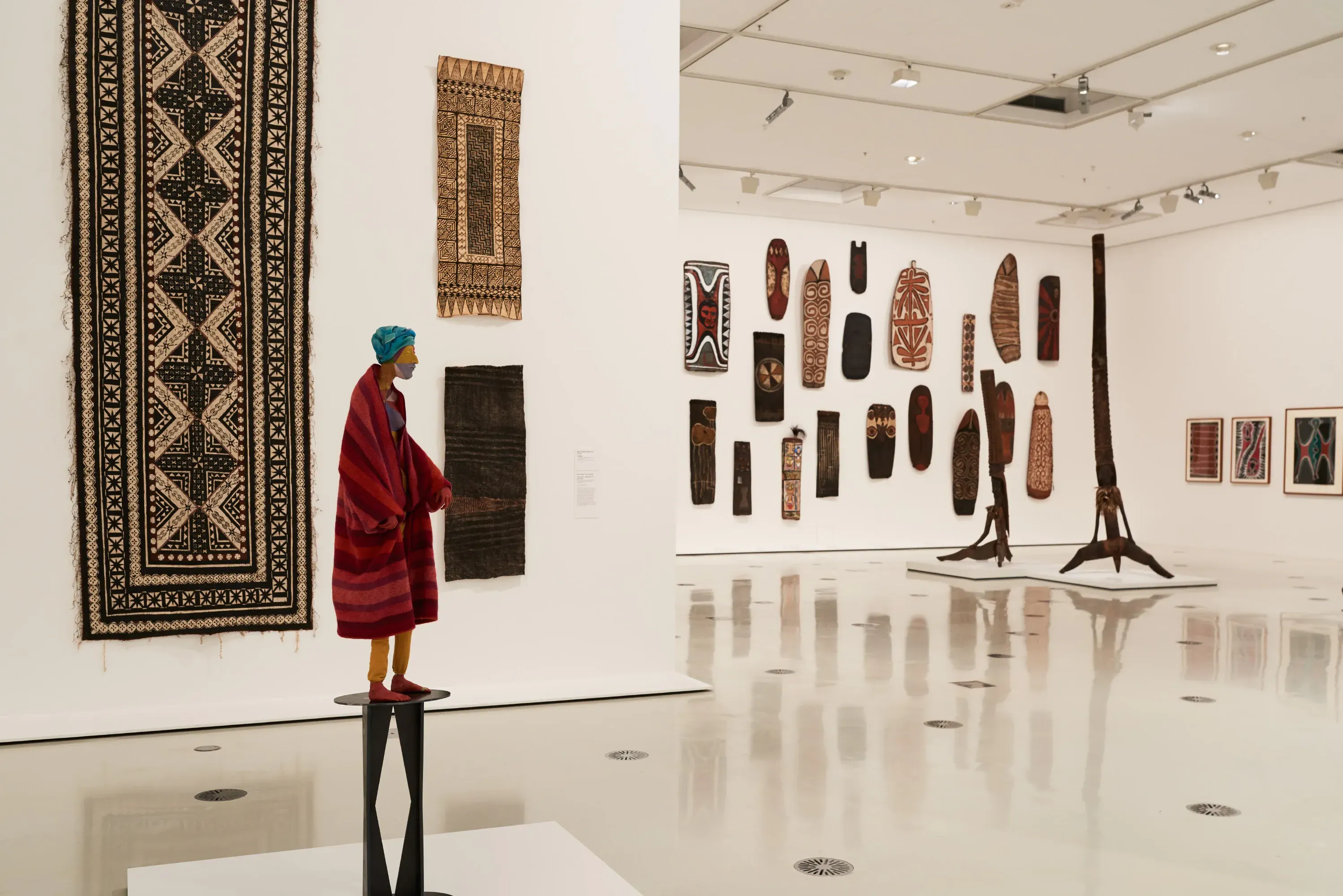An Oceanic Conversation
Written by


Right now, simultaneously, crowds at City Gallery Wellington, the National Gallery of Victoria and the Centre for Contemporary Photography, Melbourne are hovering, fascinated watching two pairs of hands carefully place rubber bands around the middle of a watermelon, waiting for it to explode.
The work is by New Zealand artist Steve Carr - and explode it eventually does. Yet here the similarities between Australia and New Zealand end.
The quality of New Zealand artists and curators work is not in question. Rather, the opportunities for the public collection and commission of our artists' work are. As one curator, who has spent extensive time in both countries, commented to me the differences in resource feels like that between a first and a second world country.
While Steve Carr has a major show of new work at the Centre for Contemporary Photography, the artist he is currently showing with at City Gallery Wellington, New Zealand-born Daniel Crooks, has an impressive new commission at Melbourne’s popular Australian Centre for the Moving Image, ‘Ghost Train’.
Across town I walk into dealer Sutton Gallery and am surprised by an exhibition of brightly coloured abstractions by Sara Hughes. Hughes it turns out has shown more times at Sutton in the last ten years than her hometown of Auckland, and not one in that time in Wellington.
From June until September the National Gallery of Victoria International will exhibit Lisa Reihana’s acclaimed In Pursuit of Venus, which it purchased in 2015. In a world premiere, it will at the same time present Greg Semu’s major new work Raft of the Tagata Pasifika. It was made with funding from Creative New Zealand and the Wallace Arts Trust. They will also have Siu i Moana an exhibition of eight large ngatu (painted tapa) made by Robin White and Ruha Fifita with the women of Haveluloto Village, Tongatapu. Ironically, given we're in Melbourne, the work that gives the exhibition its name “traces the patterns of migration along an underwater volcanic ridge that joins Tonga and New Zealand”.
These are being presented at NGV alongside Art of the Pacific, a large Pacific island collection show. Striking is the way this exhibition emphasises the connections between the Pacific and New Zealand - where the vast majority of the artists it shows reside.
Now, imagine that programme at Te Papa instead of Gallipoli.
It needs to be emphasised that Art of the Pacific is a collection show – funds have been raised by this museum for the works to be acquired for Victoria. NGV opened its first Oceania gallery in 2003, and in 2011 expanded it into a large high ceilinged space with a focus on living artists. That means largely New Zealanders.
What impresses is not just seeing a diverse range of work by contemporary New Zealand Pacific artists in conversation with each other, but also powerful recent work from around the Pacific. This ranges from a metal shield with comic hero ‘The Phantom’ emblazoned on it from Papua New Guinea - talking to Brett Graham’s ‘Shield for Antarctica’, a powerful giant wooden limpet, evoking both warfare and environmental fragility - to cartoonish contemporary spirit figures from Ambrym, Vanuatu - chatting animatedly with a Francis Upritchard figurine.
Works retain their sovereignity in curation. Angela Tiatia’s strong video performance - on her back climbing a wall with her high heels (shown recently at Mangere Arts Centre) - is neatly presented low in a corner. A range of dynamic contemporary takes on the lei, all proposed for acquisition are also hung in sequence along one wall.
The inclusion of the work of Colin McCahon, Gordon Walters and Richard Killeen, provides great conversation with one of Peter Robinson’s smart ‘strategic plan’ works in the 90s (when he tonque-in-cheek detailed a strategy for international success), but without further context they feel the odd men out.
Chris Charteris’ exhibition Tungaru has been extensively touring New Zealand. A strong series of work, it’s significant for providing for the first time a contemporary art voice to the concerns and traditions of the republic of Kiribati - from where many workers come to New Zealand. Yet how much of this work will be collected in New Zealand? In Art of the Pacific I’m impressed to see already on a museum wall the large lei works from Tungaru, with their accompanying photographs of Charteris’s Kiribati whanau.
New Zealand is clearly the cradle of contemporary Pacific Island art culture today - so why are we so backward in collecting Oceania and presenting ourselves as part of the Pacific?
Melbourne meanwhle does not strike you immediately as a Pacific city – multicultural yes, and Victorian in origin. Yet it does have a large Pacific population. Many Tongans and Samoans moved here from New Zealand to the city’s suburbs. This year’s NGV programme may go some way toward highlighting this community’s positive identity rather than the media’s ongoing focus on gang violence.
Contrast NGV’s collection commitment to the Pacific to acquisitions by Te Papa, our national museum, as published in their last annual report, for the year 2014/2015 year. A piece of body adornment by Luisa Tora is the sole work purchased by a contemporary Pacific Island artist that I can see. Outside the applied arts, contemporary art fares little better.
In Auckland we are increasingly strong in the presentation of new contemporary Pacific Island work in our public galleries, recognising its vitality. Take Te Uru’s upcoming presentation of a Janet Lilo survey Status Update, or the recent excellent Shigeyuki Kihara exhibition A Study of a Samoan Savage. Yet how well are we faring in funding the collection of this work? We have the opportunity to be at the centre internationally of an Oceanic conversation. Surely this is essential public work.
The reality check is that Melbourne has a population more than three times that of Auckland, and Victoria more than the population of the whole of New Zealand. Yet, even with our modest public means we can be more smartly focussed. Focus - like Robinson and artists who have followed him - our cultural energies in representing our place in the world more strategically.
We need to capitalise on our strengths. Right now that means collecting and commissioning the work of contemporary Maori and Pacific Island artists. We deserve to be more than the factory for somebody else’s cultural industry.
- Art of the Pacific, National Gallery of Victoria International, until 14 August 2016.
- A Manual for Small Archives, Steve Carr, Centre for Contemporary Photography, Melbourne, until 22 May 2016
- Everything Goes, Sara Hughes, Sutton gallery, Melbourne until 21 May